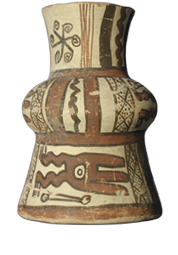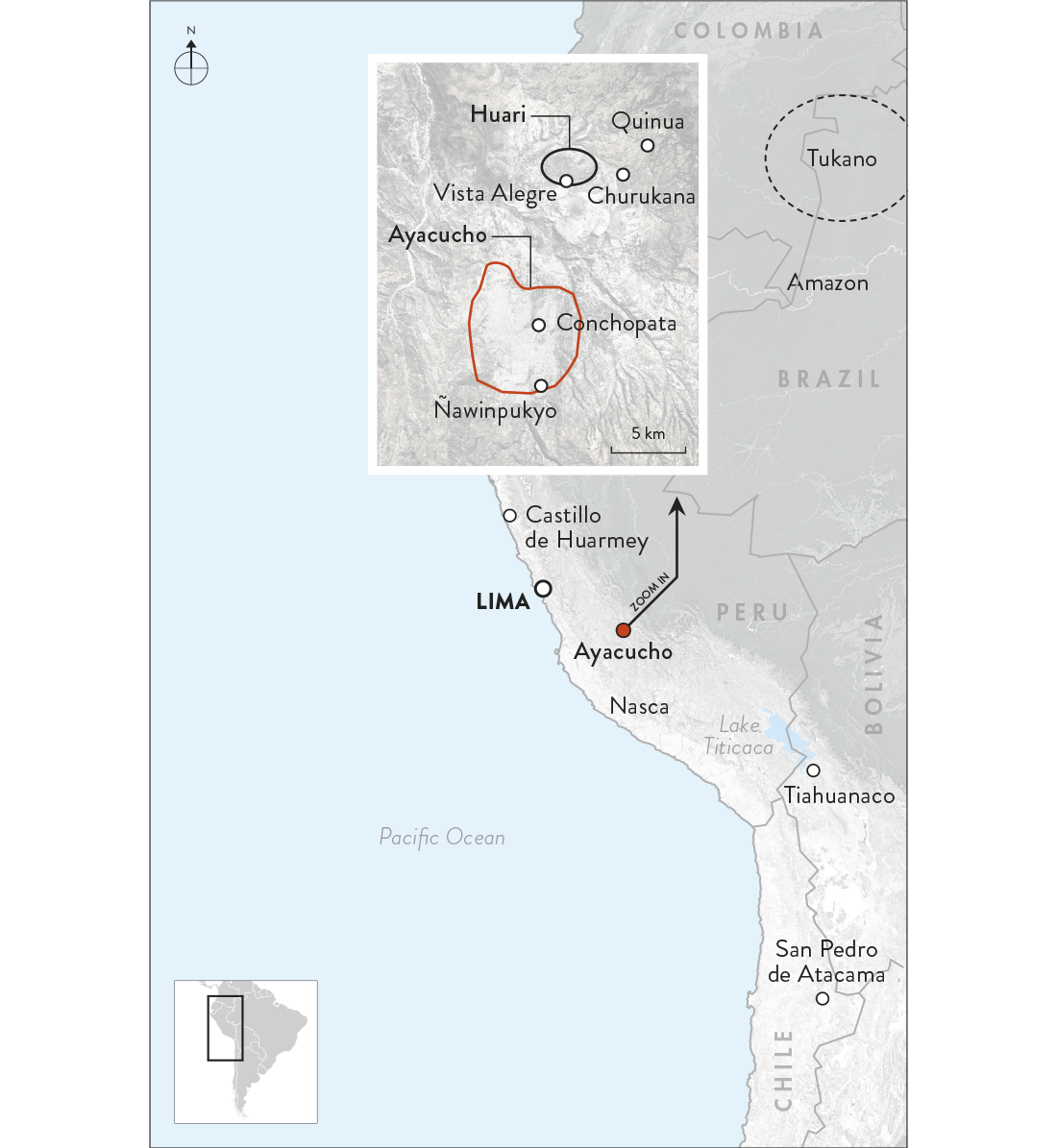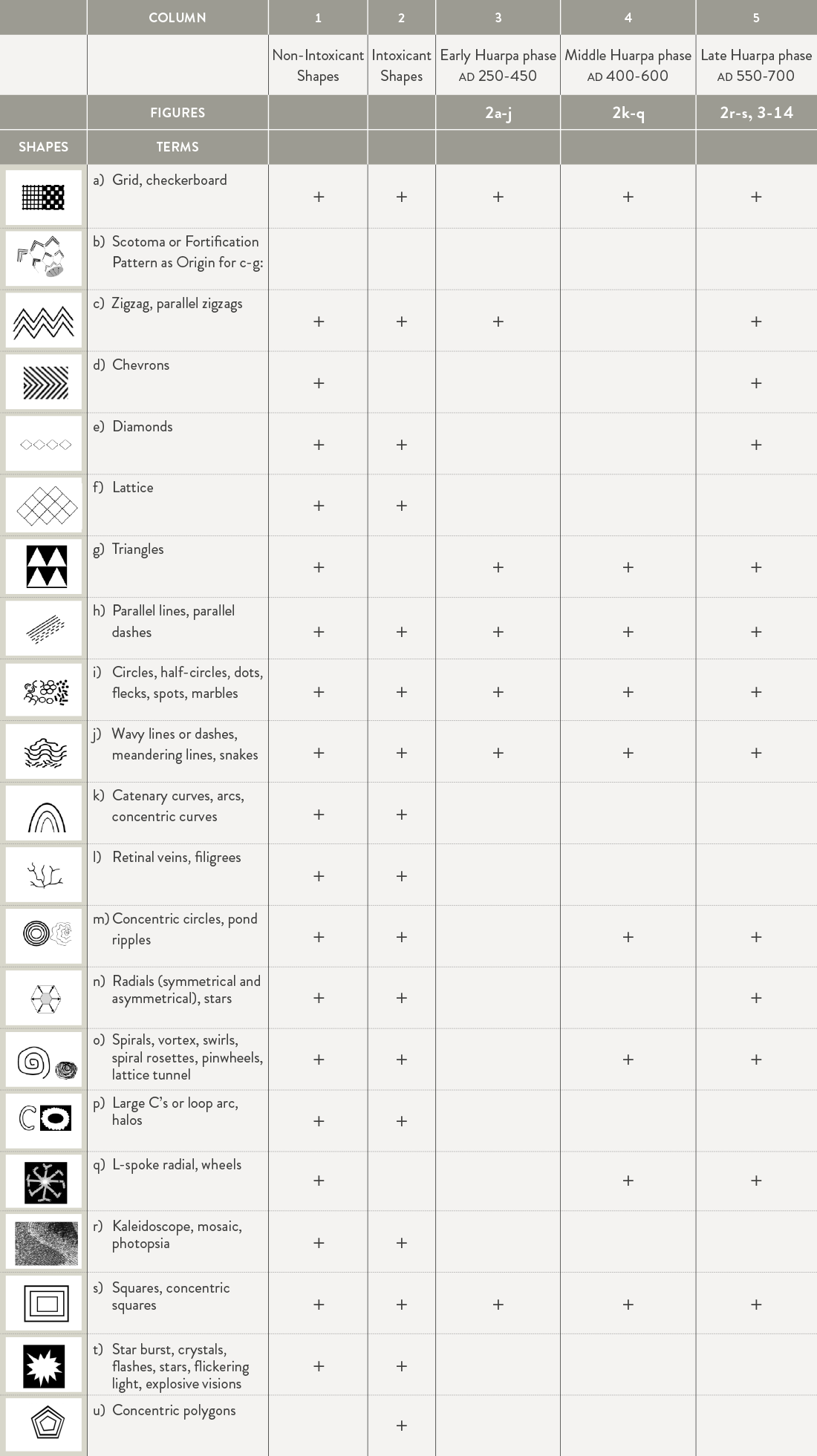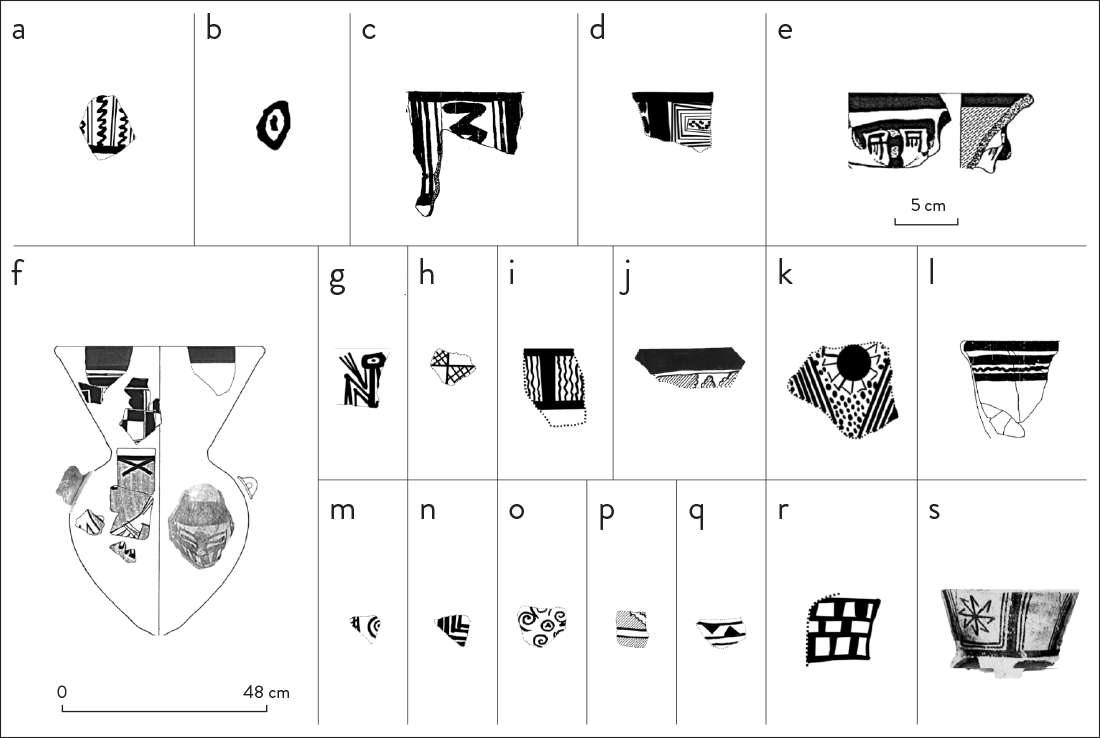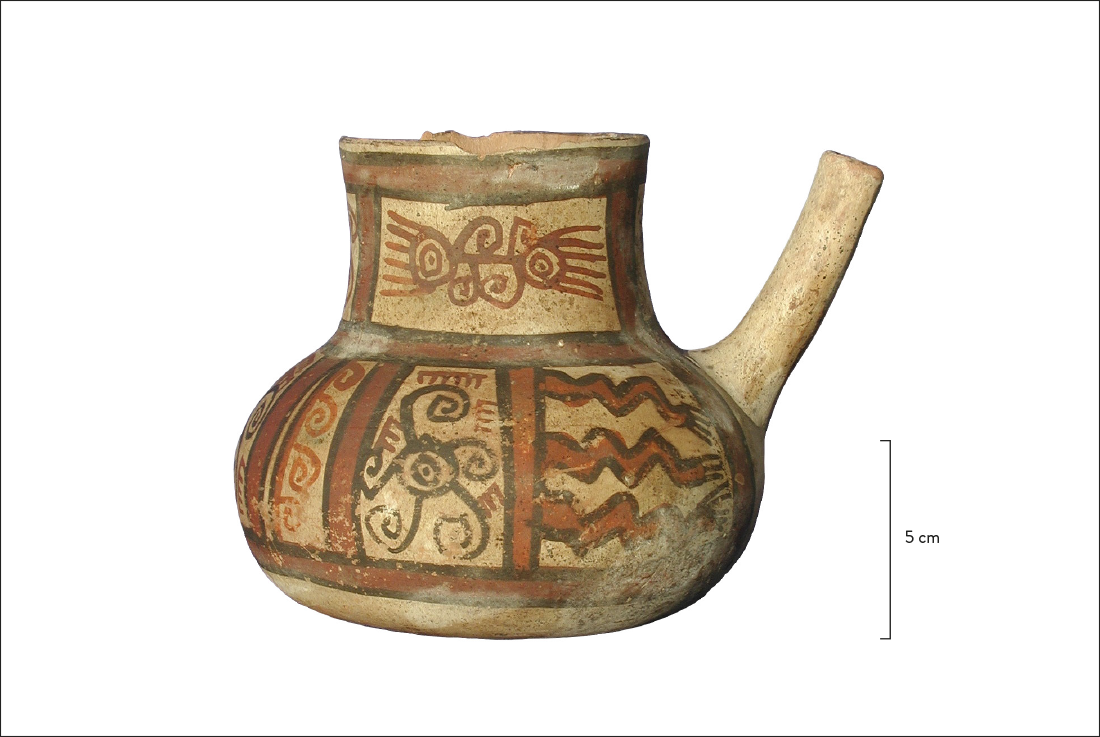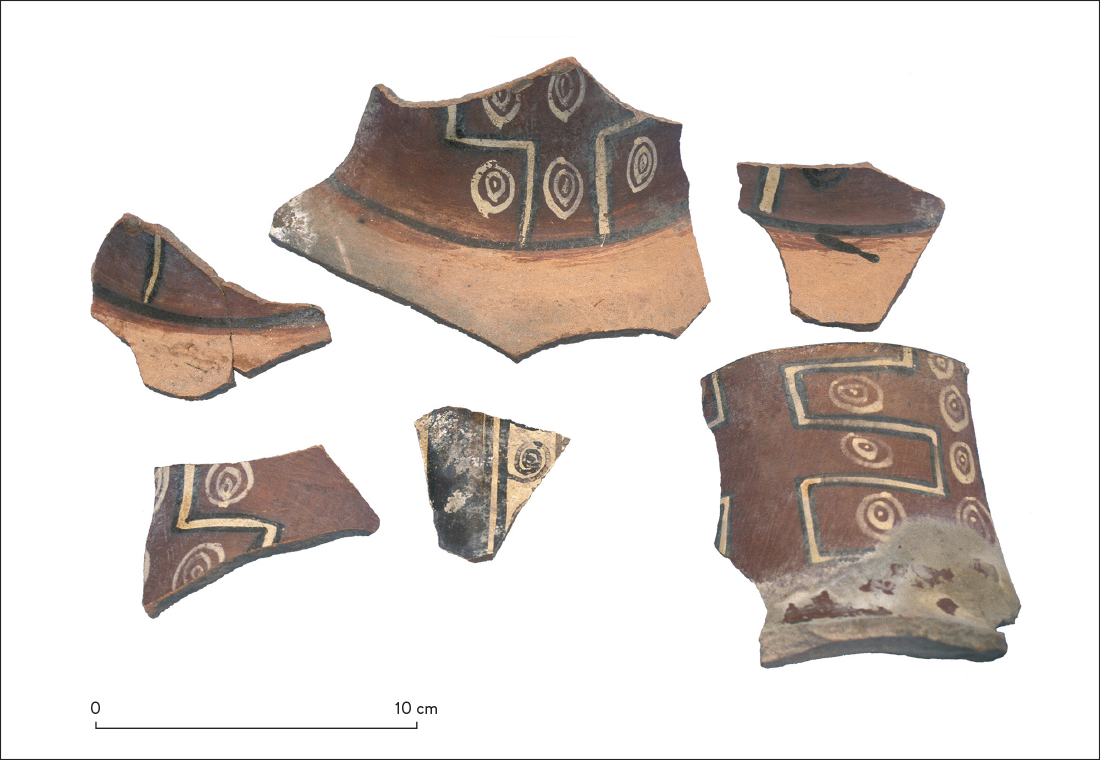The shapes of things that were: applying Huarpa art (ad 250-700) to the Lewis-Williams and Dowson entoptic model for shamanism
Las formas de cosas que fueron: el arte Huarpa (250-700 dc) aplicado al modelo entóptico de Lewis-Williams y Dowson para el chamanismo
Endogenous images are geometric shapes visualized involuntarily due to psychotropic (e.g., intoxicants) or physical (e.g., migraines) stimuli. According to the Lewis-Williams and Dowson neuropsychological model, artifacts with these shapes hypothetically document ecstatic shamanism. This article evaluates Huarpa style black-on-white geometric pottery (Ayacucho valley, Peru) to question how the shapes originated. Ceramic data represents the early, middle, and late phases of the Huarpa culture (ad 250-700). Results indicate that evidence to support ecstatic shamanism is a combination of endogenous shape analysis and the broader cultural context of Huarpa’s social network.
Keywords: endogenous, shamanism, Huarpa, Wari, Anadenanthera colubrina, Trichocereus pachanoi.
Anders, M. 1986. Dual Organization and Calendars Inferred from the Planned Site of Azangaro Wari Administrative Strategies. ph.d. dissertation, Department of Anthropology, Cornell University, Ithaca.
Arnold, D. & E. Espejo 2013. El textil tridimensional: la naturaleza del tejido como objeto y como sujeto. La Paz: Fundación Interamericana-Fundación Xavier Albó-Instituto de Lengua y Cultura Aymara.
Arnold, D. & E. Espejo 2015. The Andean Science of Weaving. Structures and Techniques of Warp-faced Weaves. London: Thames & Hudson.
Bednarik, R. 1984. On the Nature of Psychograms. Artefact 8: 27-32.
Bennett, W. 1953. Excavations at Wari, Ayacucho, Peru. New Haven: Yale University Press.




